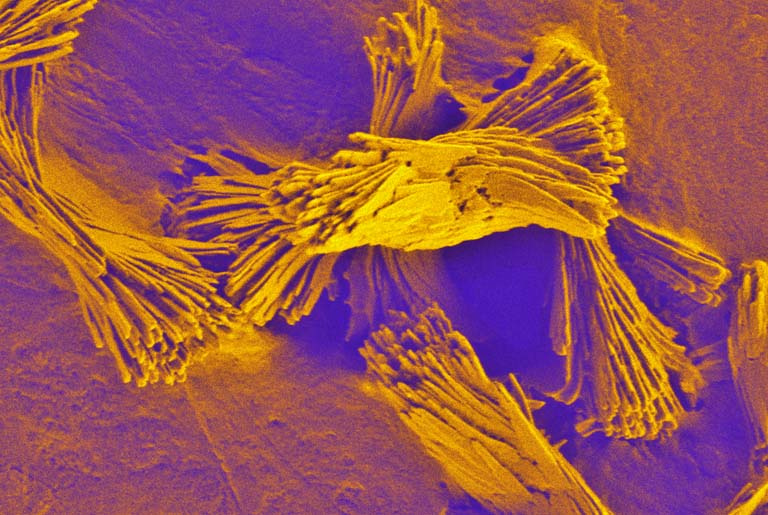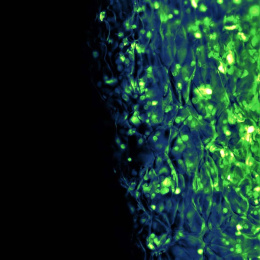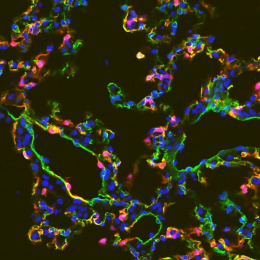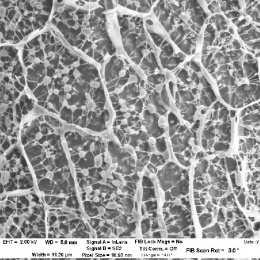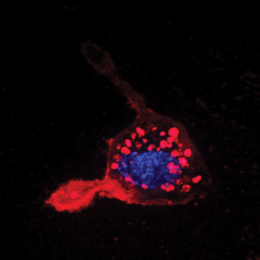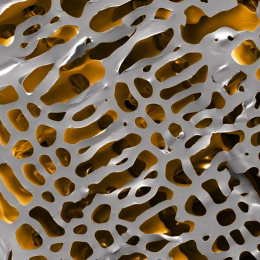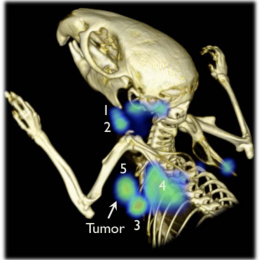Unexpected Features in Artificial Bone
Unexpected Features in Artificial Bone
Fangheng Zhou, Benjamin Larson, Héloïse Ragelle, Miralem Prijic, Robert Langer, Daniel Anderson
Koch Institute at MIT, MIT Department of Chemical Engineering, Institute of Medical Engineering and Science
This is a surprising image that we got when we were imaging an artificial bone environment that we developed. Under certain conditions, collagen fibers with both skin and bone features were found in our artificial bone environment.
Part of the artificial in vitro bone microenvironment that we have helped develop is its extracellular matrix fibrils. We wanted to know if the stem cells were able to remain on the surface after a certain drying and cross-linking step. But what we actually found was that the stem cells had been lost in the drying steps, but the underlying bone microenvironment was different than we expected under these conditions. Instead of trabeculae and long cross woven fibers, we see scales of skin-like sheets covering the highly oriented fibers, visible at certain areas where the scales and fibers were ‘torn’ up from the larger construct.
One of our larger goals is to investigate how drugs can affect tissues like bones and bone marrow. For instance, in order to treat bone related diseases and cancers, many chemotherapeutic drugs under development have to be tested in vitro before moving on to in vivo. Our artificial bone environment provides a convenient screen to visualize these drugs’ side effects on the bone microenvironment. Just like this image, some drugs could unexpectedly make bone exhibit skin features.
